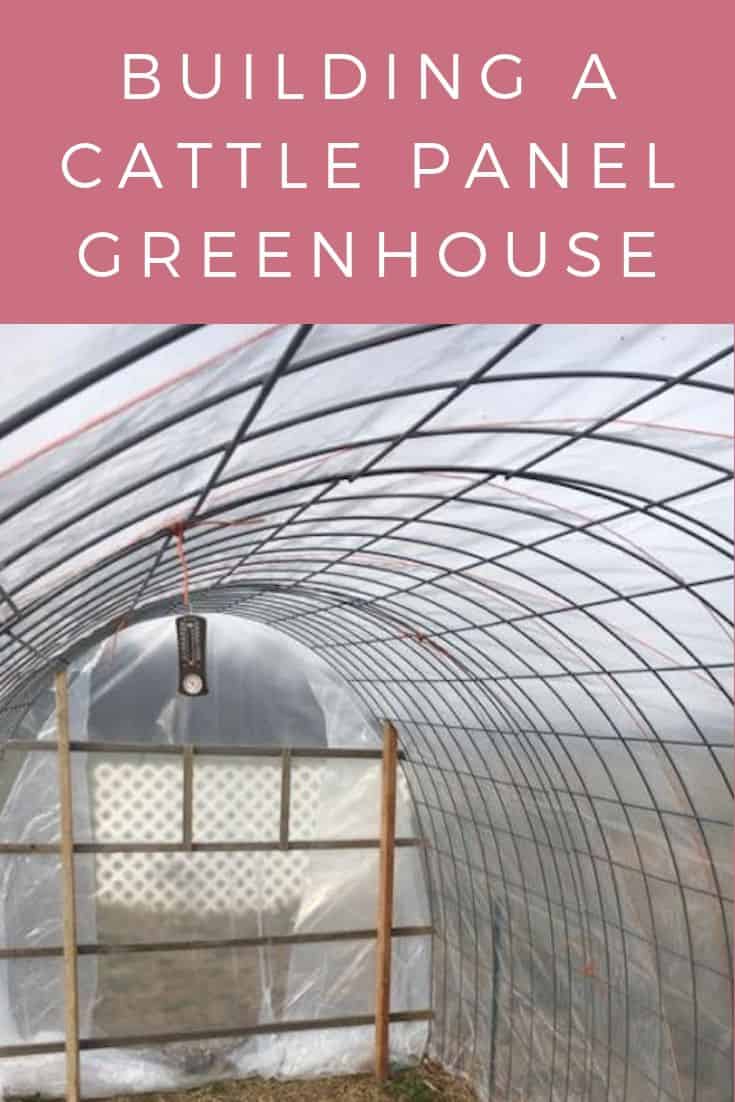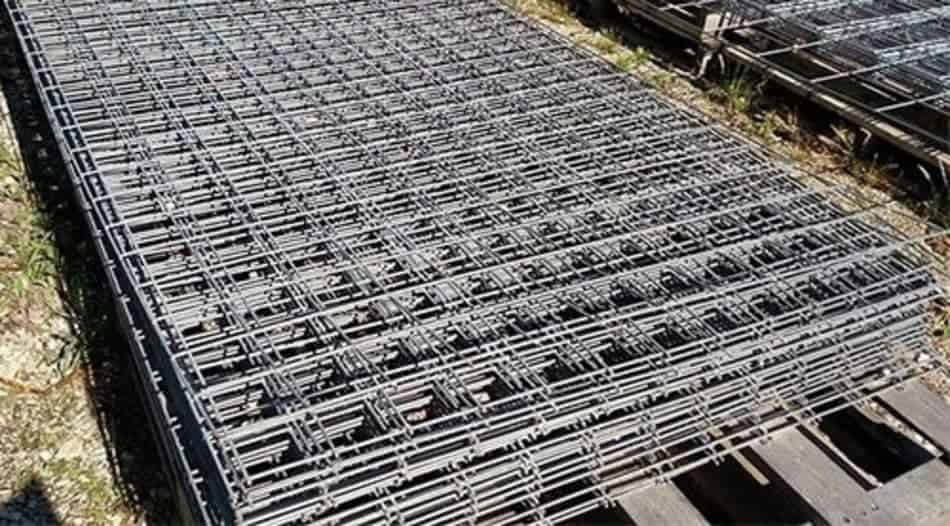If you’re looking to build a greenhouse, deciding which materials to use is one of the biggest decisions you’ll make. There are so many options out there, and a lot of it comes down to personal preferences. If you haven’t yet looked into cattle panels–some people call them livestock panels–here’s your chance to learn some more about them!
Cattle panels (AKA livestock panels) are a great building material for greenhouses. Cattle panels provide solid structure–they’re very rigid–and you can often acquire them at reasonable prices. Cattle panels can also act as trellises for your plants.
What are cattle panels?
If you’re reading this post, it’s likely that you’re familiar with cattle panels already. If that’s the case, go ahead and skip ahead to the next section—I won’t be offended! For those of us who need a little extra information, here’s what cattle panels are all about.
They are also known as livestock panels, and they’re used as fencing for cattle and other livestock on farms. If you live in a rural area, you may be able to buy or obtain cattle panels directly from a farmer who has extra panels. Otherwise, they are easy to buy at any hardware or farming supply store.
Benefits of using cattle panels for building your greenhouse
Using cattle panels for constructing a greenhouse has several benefits:
- they’re inexpensive
- sturdy
- easy to assemble
- can act as trellises for plants
- they’re large (which makes it quick to build your greenhouse)
They’re inexpensive
Probably the biggest benefit of cattle panels is how inexpensive they are. If you live or work on a farm, it’s very possible that you have extra cattle panels around already, so you wouldn’t have to spend anything to get them. As I mentioned above, if you live in a rural area or near a farm, you can try asking your neighbors if they have extra cattle panels they’d be willing to part with.
If that isn’t an option, don’t fret! Buying panels from the store is also inexpensive, especially compared to other building materials.
Sturdy building material
Another benefit is the sturdiness of the panels. Because their original purpose is to keep livestock fenced in, these panels are really strong. They’re also durable and they last a long time, which is great for greenhouses because you don’t want to be replacing your materials often.
A significant benefit is that the cattle panel requires very little assembly, especially for how much structure it provides.
It doesn’t require you to build a huge structure with lots of different connecting pieces. All you’ll really need to do is attach it to a foundation and attach the panels to each other if you’re using multiple panels.
Compared to other materials you could use for your greenhouse and compared to other building projects in general, building a cattle panel greenhouse is pretty simple!
Cattle panels double as plant trellises
Because of their structure, cattle panels act as natural trellises for your plants.
Tomatoes, cucumbers, squash, melons, peas, and beans are just a few of the fruits and vegetables that grow well on trellises. These plants will thrive on the walls of your cattle panels, and you’ll also have space to plant even more produce in the ground.
Livestock panels are large & easy to work with
Last but certainly not least, cattle panels are large. They can be shaped into an arch that is approximately 8 feet tall. You can use multiple panels, so your greenhouse can be as long as you’d like depending on how many panels you use.
For gardeners who want to grow significant amounts of produce, cattle panels provide a large structure that’s cost-effective and easy to work with.
Cattle panels will probably be best for those of us who live in rural areas or have a lot of land on which to build their greenhouses. This is a great option for people who plan to sell or give produce away and have some for themselves and their families as well—you’ll be able to grow so much in a greenhouse this size.
Drawbacks of using cattle panels
The biggest drawback of cattle panels is that if you live anywhere with inclement weather (and most of us do!), your cattle panels won’t stand on their own and protect your produce. If you experience very cold weather where you live, cattle panels may not be your best option.
That being said, you can pick a hardy material with which to cover your panels and you should have great results! It just brings up the cost. If you live somewhere with year-round warm weather, you should be able to get away with using a less sturdy covering (which will be less expensive). You might even be able to eliminate the cover for much of the year. More on materials later!
I discussed the second drawback above in the benefits section: size. If you’re looking for a large-scale greenhouse, cattle panels are a great material.
But if you’re working with a smaller space or simply don’t plan to plant much and don’t need all that space in your greenhouse, there are other materials you can work with that will probably be better for you in the long run.
Building your cattle panel greenhouse
If you’ve made it this far, you’re likely on board with using cattle panels to build your greenhouse’s structure, or you’re at least curious about the building process. Here’s a loose sketch of what the assembly process will look like.
- Map out the space for your greenhouse and get your soil in order. If you have a large, flat area with good soil, that’ll be perfect and you won’t have to do anything in terms of preparing the ground. If you don’t, though, no worries at all. You can bring some good soil in, use raised beds, or use the space inside the greenhouse for potted plants.
- Decide how many cattle panels you want to use and find or buy them. Like I said above, cattle panels end up forming an arch that’s about 8 feet tall. You decide the length by deciding how many cattle panels you want to use.
- Decide how you want to build your foundation and acquire those materials. The cattle panels will need something to be attached to, and the foundation can also provide structure for your plants that you’ll plant in the ground. Many gardeners use wooden pallets for the foundation,which is an inexpensive option (you can often get them for free!). Others use pieces of wood that they attach in order to build the right size foundation.
- If you’ll be covering your cattle panels with weather-proof material, purchase that. Greenhouse plastic is the most popular material for this, but the weather you experience will be the deciding factor in which material you use.
- Purchase your stakes. The stakes will help stabilize the foundation and will also be the sites where you attach your cattle panels to the foundation. You can attach your stakes to the cattle panels using zip ties or hay bale ties.
- Assemble a team of helpers if you can. You can do this project by yourself, but since you’ll be working with large materials and this is a significant project, it’ll be much quicker, easier, and more enjoyable if you have help!
- Build your foundation and hammer the stakes in. The number of stakes will vary, but it’s always better to have more than less in order to keep the structural integrity of your greenhouse.
- Attach your cattle panels to the stakes.
- Cover your panels with material if you are choosing to do so. If you do experience inclement weather but you’re starting this project at a time when you have nicer weather, you can hold off on this step until the weather is going to change.
There you have it! Depending on what you’re looking to do, cattle panels are a great option for greenhouse building. Best of luck in your greenhouse building endeavor!
Related questions
What else can I build with cattle panels?
Cattle panels can be used for lots of structural projects. They make great frames for sheds, doghouses, composting bins, and chicken coops. You could also use a cattle panel as a vertical trellis or fence for plants in a garden.
Do cattle panels work well in the snow?
Because cattle panels were designed to be outside, snow won’t wear them down physically. That being said, because of the way they’re built, they don’t offer your plants protection from snow or frost. Placing greenhouse plastic over the panels will help with this, but in extreme conditions, your plants might need extra protection.
How do I choose my materials for the rest of the greenhouse?
The best thing about the cattle panels is that they’re easy to get, either for free or very inexpensively. This can be true about the rest of your materials as well!
The best place to start is by evaluating what you already have or could easily get.
From there, you’ll need to consider the weather in your area—you’ll want sturdier materials if you experience harsher weather. After that, it’s mostly about personal preference, how much you’re looking to spend, and what you want to grow in your greenhouse. Knowing what you want to grow will help you get a good idea of the space and materials you’ll need inside.


